The Svalbard Islands are a remote Arctic wonderland, where icy landscapes meet untouched wilderness. Located between Norway and the North Pole, this archipelago is famous for its dramatic glaciers, frozen fjords, and the mesmerising Northern Lights. Home to polar bears, reindeer, and vast bird colonies, Svalbard offers a rare chance to experience nature at its rawest. Visitors can explore ice caves, witness the midnight sun, or embark on thrilling Arctic expeditions. Despite its extreme climate, Svalbard’s beauty is unmatched, making it a dream destination for adventurers and nature lovers alike.
Location
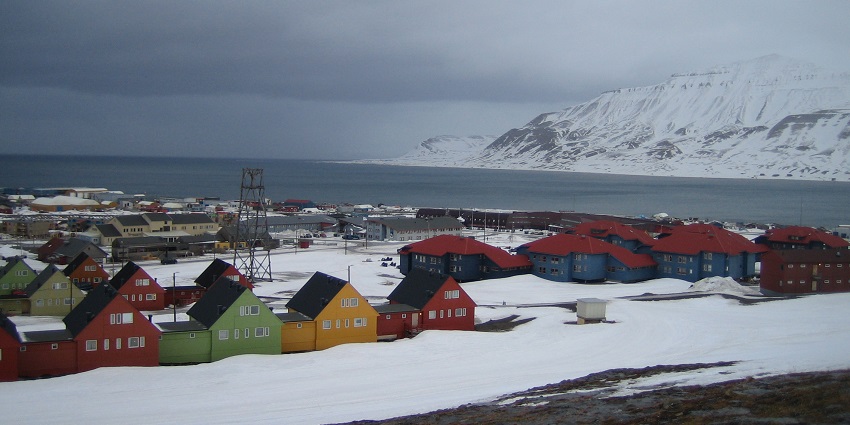
Photo: Schwarz Weiss / Wikimedia Commons
The Svalbard location is in the Arctic Ocean, approximately 1,050 km north of mainland Norway and 1,300 km from the North Pole. This remote archipelago lies between 74° and 81° north latitude, making it one of the northernmost inhabited areas in the world. It consists of several islands, with Spitsbergen being the largest and most populated. Svalbard is surrounded by the Greenland Sea, Barents Sea, and the Arctic Ocean. Despite its isolation, it is accessible via Svalbard Airport, Longyearbyen, which has regular flights from Oslo and Tromsø.
How To Reach
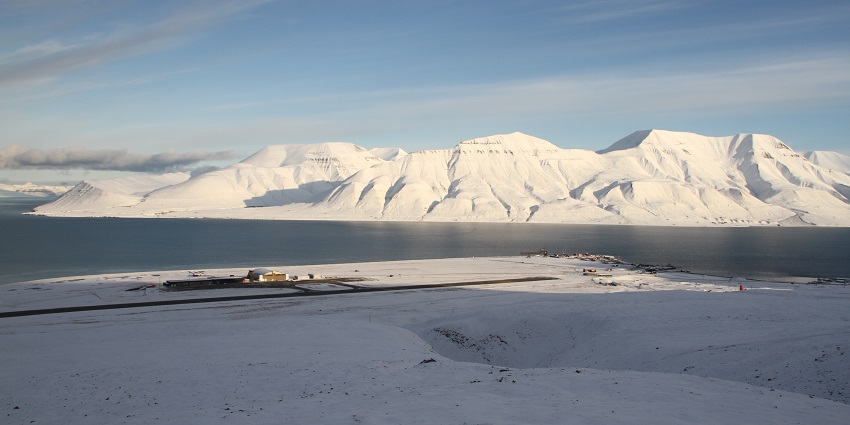
Photo: Bjoertvedt / Wikimedia Commons
The main entry point is Longyearbyen, the largest settlement. There are no rail or road connections from mainland Norway, so air travel is the only option.
By Air: Svalbard Airport, Longyearbyen (LYR) is the only airport with commercial flights. Direct flights operate from Oslo (approx. 3 hours, 1,950 km) and Tromsø (approx. 1.5 hours, 950 km) year-round.
By Train: There are no train services to Svalbard.
By Road: No road links exist between mainland Norway and Svalbard. Travel within settlements is by snowmobiles, boats, or local transport.
Places To Visit On The Svalbard Islands
Experience the quiet thrill of Svalbard island tourism with the 3 must-visit places for all tourists:
1. Longyearbyen
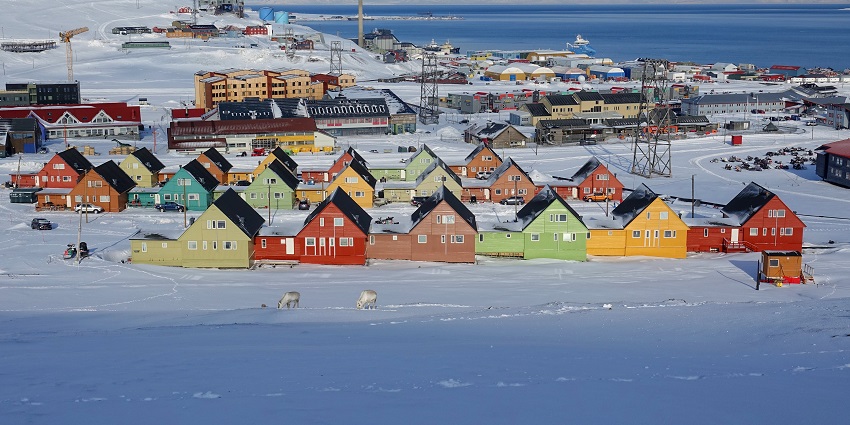
Photo: Bjørn Christian Tørrissen / Wikimedia Commons
Longyearbyen is the northernmost settlement in the world with over 1,000 residents. It serves as the gateway to Svalbard, offering Arctic adventures, museums, and breathtaking landscapes. The town has modern facilities, including hotels, restaurants, and shops, making it the best base for exploring the region. Visitors can enjoy dog sledging, snowmobile safaris, and glacier hikes. Due to its extreme location, Longyearbyen experiences the Midnight Sun from April to August and Polar Night from November to January. Consider purchasing the Svalbard island map as a souvenir from this exotic visit.
Location: Spitsbergen Island, Svalbard
Major Attractions: Svalbard Museum, North Pole Expedition Museum, Svalbard Church, Northern Lights viewing
Ideal For: Culture enthusiasts, Arctic explorers, history lovers
2. Pyramiden
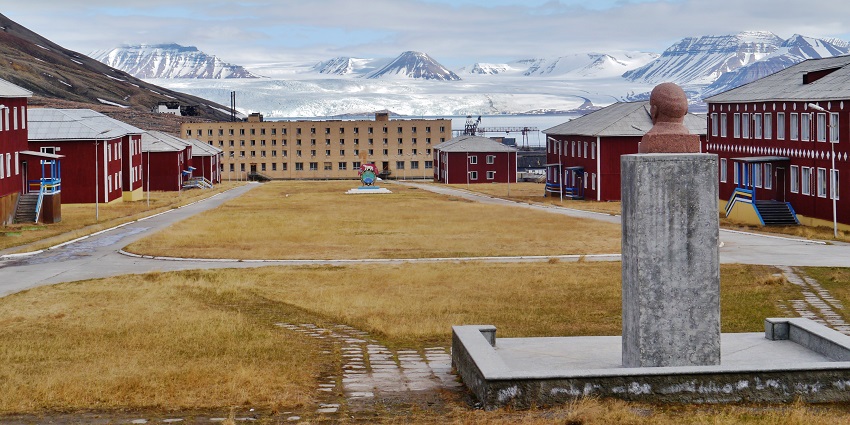
Photo: Zairon / Wikimedia Commons
Pyramiden is an abandoned Soviet mining town, frozen in time. It offers eerie yet fascinating glimpses into the past, with well-preserved buildings and stunning Arctic landscapes. Over 1,000 Soviet citizens once lived in the town, but economic decline forced its abandonment in 1998. Despite its ghost town status, the Pyramiden Hotel remains open for visitors, offering guided tours and overnight stays. The town sits near the Nordenskiöld Glacier, a spectacular sight in both summer and winter.
Location: 50 km north of Longyearbyen, Spitsbergen Island
Major Attractions: Lenin Statue, abandoned Soviet buildings, ghost town tours, Nordenskiöld Glacier
Ideal For: History buffs, adventure seekers, photographers
3. Svalbard Global Seed Vault
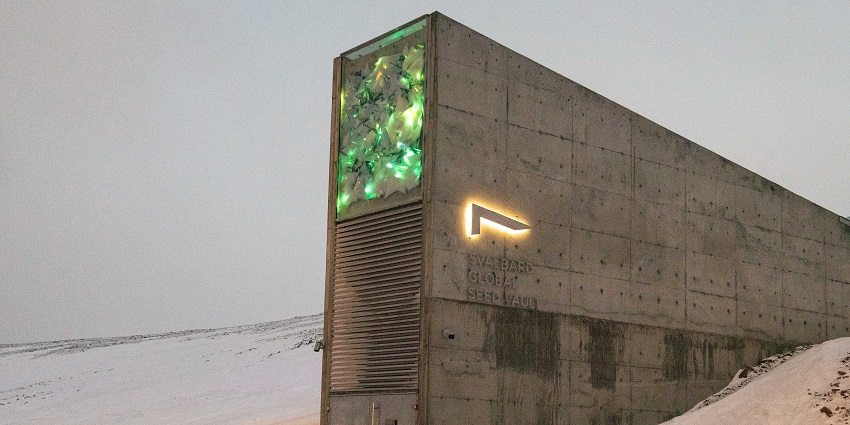
Photo: Cierra Martin / Wikimedia Commons
The Svalbard Global Seed Vault is a secure storage facility safeguarding the world’s crop diversity. Set deep in permafrost, it preserves seeds from across the globe. Opened in 2008, it stores over 1.2 million seed samples, protecting them from climate change and disasters. The vault is designed to withstand earthquakes, rising sea levels, and nuclear threats, ensuring future generations have access to diverse food crops.
Location: 5 km from Longyearbyen, Spitsbergen Island
Major Attractions: Exterior view of the vault, Arctic landscape, guided educational tours (pre-arranged)
Ideal For: Science enthusiasts, conservationists, researchers
Must-Have Experiences On The Svalbard Islands
Immerse yourself in icy wonder and beauty with these 3 must-have experiences on the Svalbard islands:
1. Exploring Ice Caves

Photo: Mavlyudov Boris / Wikimedia Commons
Beneath Svalbard’s massive glaciers lie stunning ice caves, formed by meltwater tunnels during summer. Winter is the best time to explore these frozen wonders, as the ice formations are at their most stable. The caves reveal mesmerising blue ice walls, frozen waterfalls, and intricate natural tunnels. Guides lead visitors through narrow passages, teaching them about glacier movements and Arctic geology. Guides provide special thermal suits, helmets, and crampons for safety.
2. Dog Sledding Under The Northern Lights
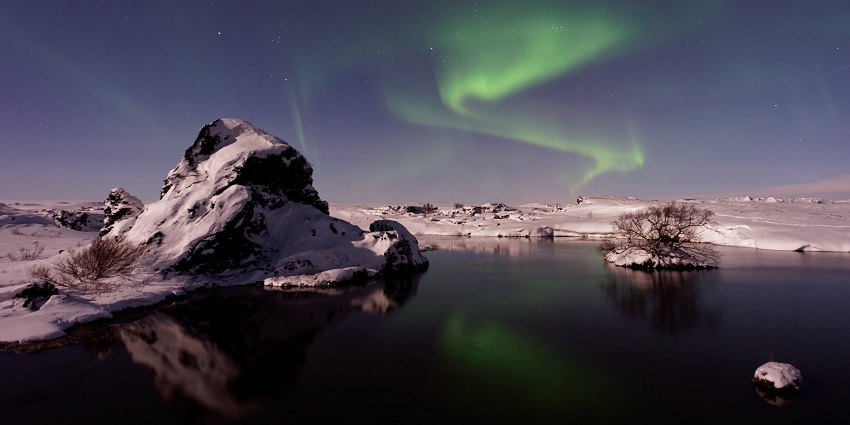
Photo: Vincent Guth / Wikimedia Commons
Dog sledging is one of the most exhilarating ways to explore Svalbard’s Arctic wilderness. In winter, visitors can ride across snow-covered valleys and frozen fjords while being pulled by a team of energetic huskies. For an even more magical experience, evening sledge rides offer a chance to witness the Northern Lights dancing above the Arctic sky. Guides teach visitors how to handle the sledge and work with the dogs, making it an immersive experience.
3. Arctic Ocean Kayaking
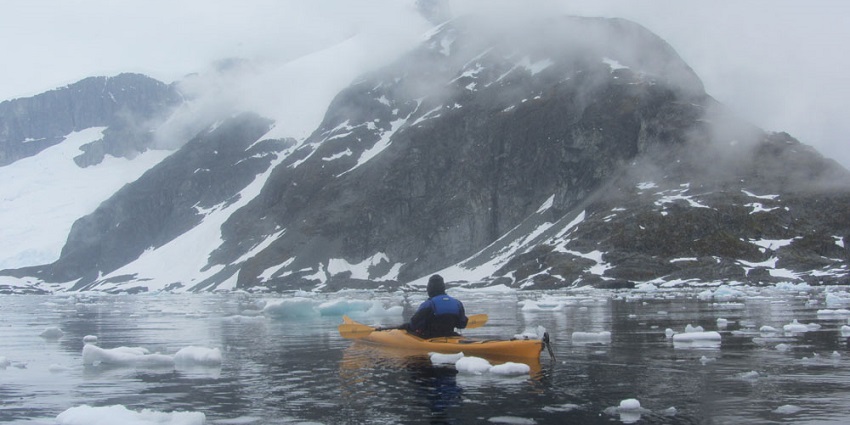
Photo: Lewnwdc77 / Wikimedia Commons
Kayaking in Svalbard offers a unique way to experience the Arctic’s dramatic coastline, glaciers, and wildlife. During summer, when the sea is free of ice, visitors can paddle through iceberg-filled fjords and past towering glaciers. You’ll commonly spot seals, walruses, and Arctic birds along the way. The 24-hour daylight of the Midnight Sun makes the experience even more surreal. Kayaking excursions are usually combined with glacier hikes or camping trips, offering a full Arctic adventure.
Where To Stay

Photo: Niels Elgaard Larsen / Wikimedia Commons / Image For Representation Only
Accommodation in Svalbard ranges from budget lodges to luxury hotels. Longyearbyen has the most options, including Radisson Blu Polar Hotel, the world’s northernmost full-service hotel, Barensburg Hotel,and Funken Lodge, known for its comfort and fine dining. Budget travellers can stay at Gjestehuset 102, a cosy guesthouse. For a unique experience, Isfjord Radio Adventure Hotel offers remote Arctic lodging. Booking in advance is essential, especially in peak winter and summer seasons.
Where To Eat
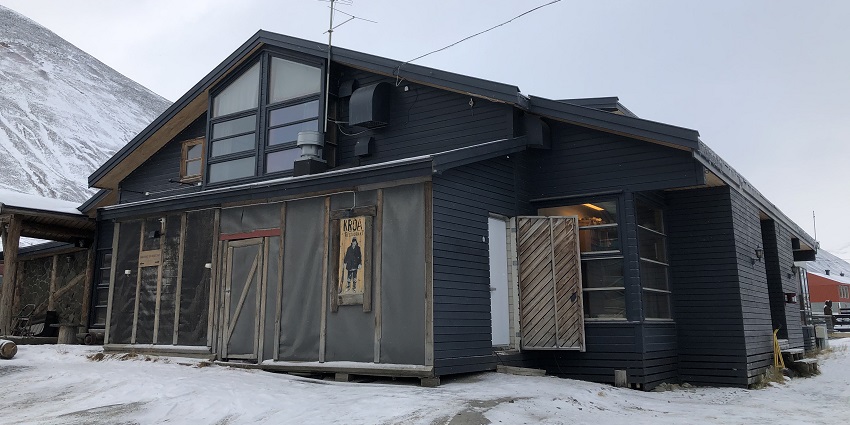
Photo: Ssu / Wikimedia Commons
Longyearbyen offers a variety of dining options, from cosy cafés to fine dining. Huset offers Arctic-inspired gourmet cuisine, while Kroa serves hearty meals in a rustic setting. Fruene is a must-visit for coffee and homemade chocolates. For a unique experience, Restaurant Polfareren offers Nordic-style dishes. Limited options mean you should reserve a table, especially during peak season.
Best Time To Visit
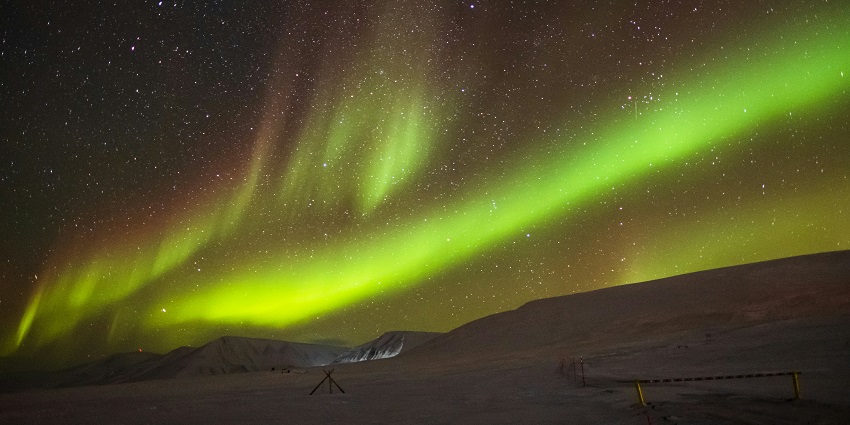
Photo: Cezary Morga / Unsplash
The best time to visit Svalbard depends on the experience you seek. Winter (November–February) offers the magical Polar Night, with the Svalbard weather being ideal for viewing the Northern Lights. Spring (March-May) is best for dog sledging, snowmobiling, and ice cave exploration, with longer daylight hours. Summer (June–August) brings the Midnight Sun, allowing kayaking, glacier hikes, and wildlife spotting. Autumn (September–October) is quieter, with a chance to see the Northern Lights return. Each season offers unique Arctic adventures.
Other Factors To Consider
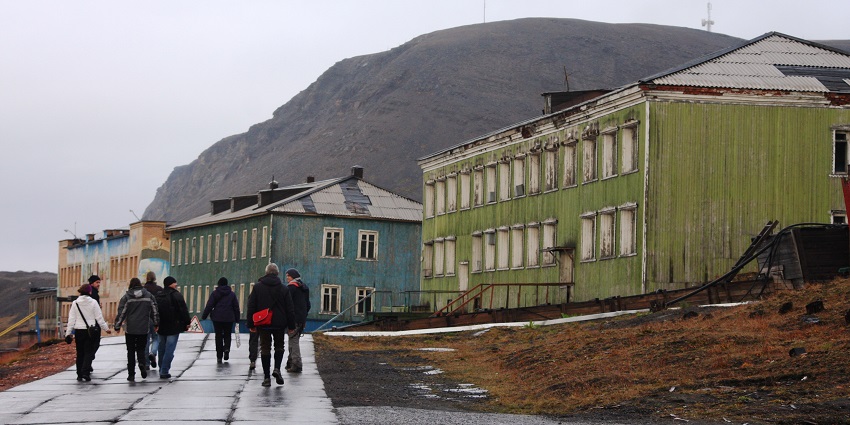
Photo: Bjoertvedt / Wikimedia Commons
Average Cost Of The Trip
The average cost of a trip to Svalbard Islands ranges from ₹90,000 to ₹1,50,000 per person for a week. This includes flights (approximately ₹50,000-₹80,000), accommodations (around 1,500-2,500 NOK per night), meals (about 400-600 NOK per day), and activities like dog sledding or snowmobile tours. Prices can vary based on the season and personal preferences, so it’s advisable to plan ahead for a more accurate budget.
Tips For Travellers
- Temperatures can drop below -20°C in winter. Proper thermal clothing is essential.
- No roads connect settlements; travel is by snowmobile, boat, or guided tour.
- Polar bears roam freely. Carrying a firearm outside settlements is mandatory (for guides).
- Most places accept credit cards, but the Norwegian currency (NOK) is useful.
- Svalbard has strict eco-protection laws. Laws prohibit littering and disturbing wildlife.
A trip to the Svalbard Islands is an adventure like no other. From witnessing the Northern Lights in winter to kayaking past majestic glaciers in summer, every season offers something unique. The untouched Arctic wilderness, rich wildlife, and fascinating history make it a dream destination for explorers. Plan, dress warmly, and embrace the Arctic’s raw beauty. This remote paradise awaits those ready for a truly extraordinary journey, plan your next adventure today with TripXL.
Cover Photo: Lloyd Woodham / Unsplash


 WhatsApp
WhatsApp
 Twitter
Twitter









